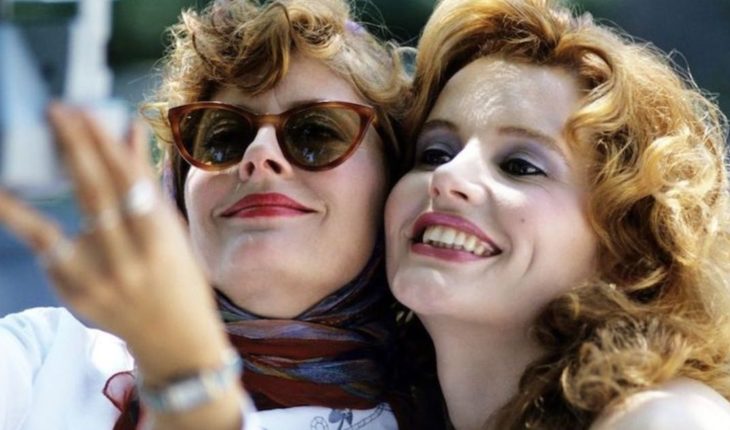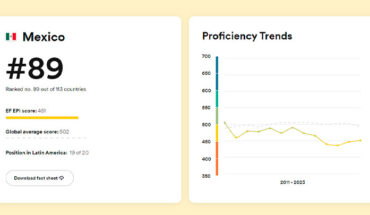While walking down the street one afternoon, a man from his car yelled at Callie Khouri to do oral sex (not with those words, of course). The screenwriter took off his glasses, looked him in the eye and told him he said he’d like to shoot him in the face. This meeting generated in Khouri the need to tell a story based on the simple idea of a world in which women could respond to these stalkers as they wanted. ” Thelma & Louise “premiered on May 24, 1991 and generated a revolution in Hollywood. The film starring Geena Davis and Susan Derandon is a story of friendship, empowerment and liberation that horrified part of the specialized critique and was celebrated as a story of “female revenge” by feminist movements.
The film is not only starring two women, but they are middle-aged women (35 and 45 years old), outside the Hollywood beauty standards at the time. The men of history are irrelevant and exist only as a vehicle of the motivations of the protagonists, either as part of a failed marriage, as a romantic interest or as a threat. ” Thelma & Louise “looks at the world from a feminine perspective as it had not made any story so far, to the point that when Louise murders the man who was about to rape Thelma and this proposes to surrender, his companion reminds you that the whole bar saw them bail I walk all night and no one will believe that there was no consensus. “Who’s going to believe that? We don’t live in that world, “sentence Louise. In a column titled” Is this feminism? “Posted in 1991, journalist Margaret Carlson believes that although the film represented a paradigm shift in Hollywood, an industry that has been” very busy doing Movies about fools, prostitutes, treacherous and hysterical and celebrating the misogynists who kill them “,” Thelma & Louise “could hardly be called a” film for women or with feminine sensibility. ” Calrson alleges that during the history the protagonists are released worse from a search so “savage and self-destructive” that leads them to launch the end of the world. The journalist refers to the end of the film in which Thelma and Louise, locked up by the police, decide to accelerate to a cliff — a sequence part of the feminist movement identified as a punishment for women who defy the macho world in which they live. Screenwriter Callie Khouri dissents: “For me the end is symbolic, not literal,” he said in his book “Thelma and Louise and something to talk about (scripts)”. We did everything we could to make sure that no literal death is seen (…). The Spectator is left with the image of them flying. They flew out of this world and into the collective consciousness. Women who are completely free of all chains have no place in this world. The world is not big enough for them. ”
Thelma (Geena Davis) and Louise (Susan Derandon) rocking the desert
“Thelma & Louise” was a modest blockbuster but won six Oscar nominations in the categories of actress leading (for Geena Davis and Susan Derandon), direction, photography, editing and the only one in which it was won, original screenplay. The celebration of the critics, the academy and the public thought that the film was going to be a breaking point for the industry and yet little has changed in the last quarter of a century. The Geena Davis Media Gender Institute has been analyzing women’s and minorities ‘ representation in Hollywood for years, and the percentages remain at alarming levels. The data collected in the decade between 2007 and 2017 among the hundred most popular films of that year, only 28 percent of the stories in the movies have a woman in the lead role and their gender representation fluctuates between 9 percent (in action) and E L 28 percent (comedy), with maxims of 55 percent in terror (where they usually represent the target of the threat) and 46 percent in romance. The female presence has not increased significantly behind the camera. The women and Hollywood portal, based on the data from the Center for the study of girls in television and cinema, ensures that among the 100 most grossing films of 2018 were found 4 percent of directors, 15 percent of screenwriters and less than 20 percent pro Ducting. The portal also highlights that in the history of the Oscar awards only five women have been nominated in the category of best director and only one (Kathryn Bigelow) has won, while Rachel Morrison has been the only director of photography nominated for a prize of the Academia.La feedback is confirmed through the study titled “It is a world (celluloid) of men: representation of female characters in the main 100 films of 2017”, which establishes that in productions with a woman in the direction or in the Screenplay the percentage of women in leading roles amounted to 45 percent, as did women in the lead role (48 percent) and female characters with dialogue (42 percent) — in films with male director/writers roles Principals fall to 20 percent.
“Wonder Woman” became a milestone after its debut in 2017 | Image: Warner Bros.
In 2017 “Wonder Woman” became a landmark in Hollywood for being one of the first productions with a 100 million dollar-led budget (the first was “K-19: The Widowmaker” by Kathryn Bigelow) and won the record of Fundraiser during your first weekend for a story with a protagonist. The film directed by Patty Jenkins was not the first story of superheroes starring a woman — “Elektra” (2005, Rob Bowman) and some others precede it — but it represented a breaking point because it received criticism superior to the rest of the productions of DC and showed that those stories can also be a blockbuster. Marvel, with all the good he has handled his cinematic universe, took much longer to give a chance to one of his many heroines: “Captain Marvel” was Conviritó in the first film starring a woman who also represented the debut of a director in the Franchise (Anna Boden, who co-directed and wrote the screenplay with Ryan Fleck). Today “Captain Marvel” is the first live action film directed by a woman who surpassed the $1 billion in the box office and next to “Frozen” are the only two women led among the 39 productions that have reached that mark in history. ” Thelma & Louise “was disruptive and felt in 1991 as the beginning of a revolution that Hollywood quickly took charge of squandering to return to the status quo. Something similar happened with “The Hunger Games”, “Frozen” and “The Wonder Woman”, blockbusters starring women who failed to move to a more comprehensive movement. Maybe it’s 2019, after “Captain Marvel” and recent films and as different as “widows”, “Eighth Grade”, “Can you ever forgive me?” or “Tully”, the time of change. If the world of 1991 was not ready for it there is no doubt that today is demanding it. As Davis herself said in an interview in 2015: “I think women in the industry are remarkable. A lot of people are feeling a lot more comfortable saying it’s not fair. ” In this note:





